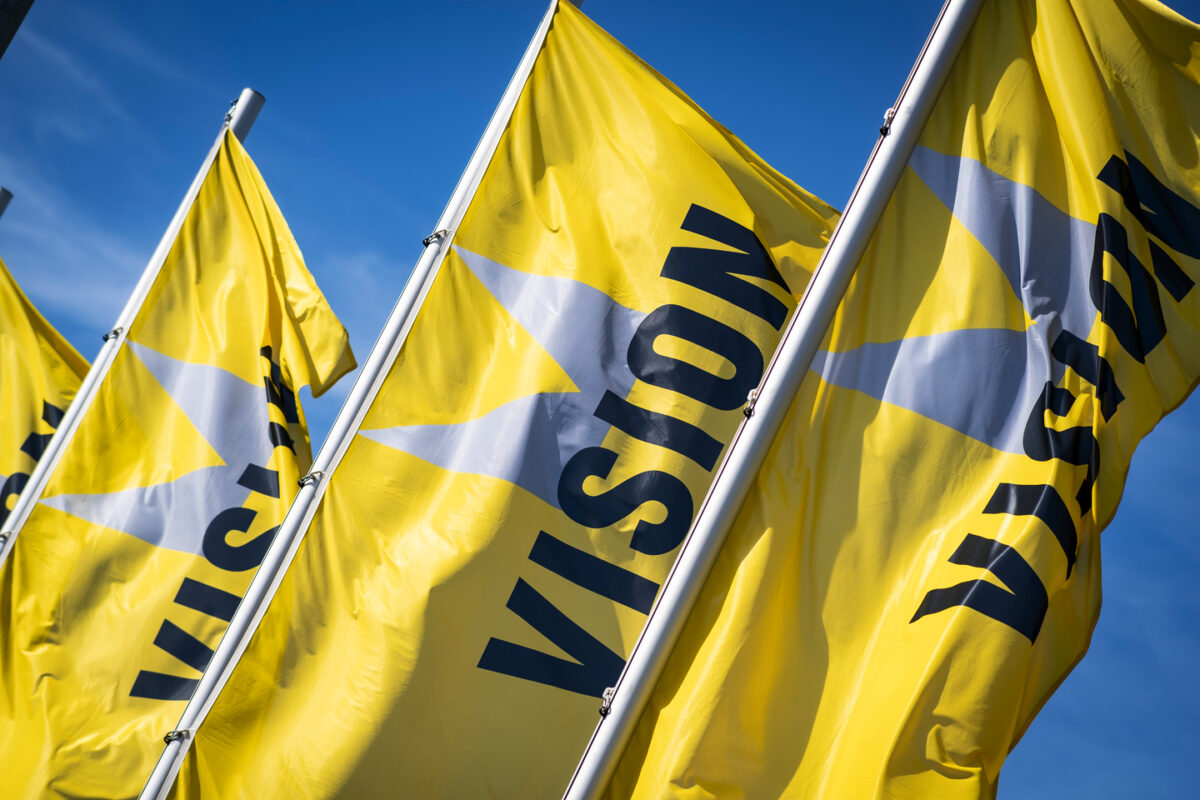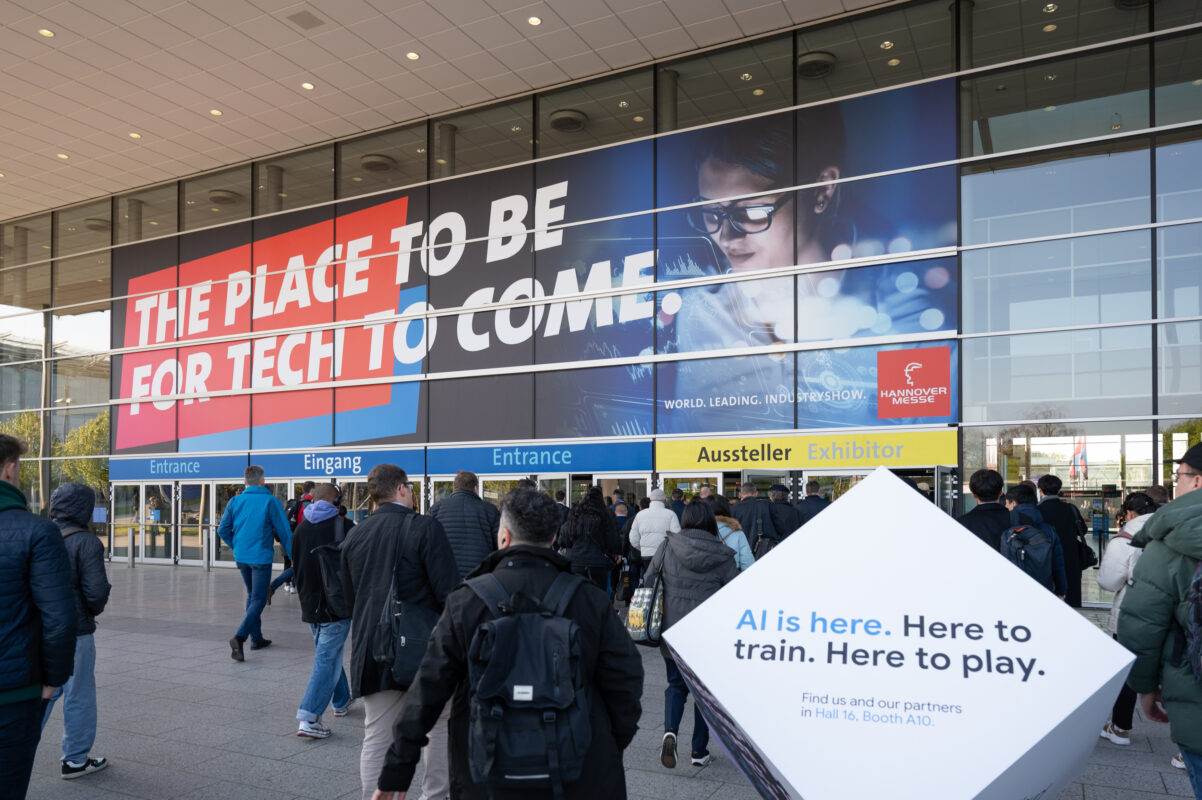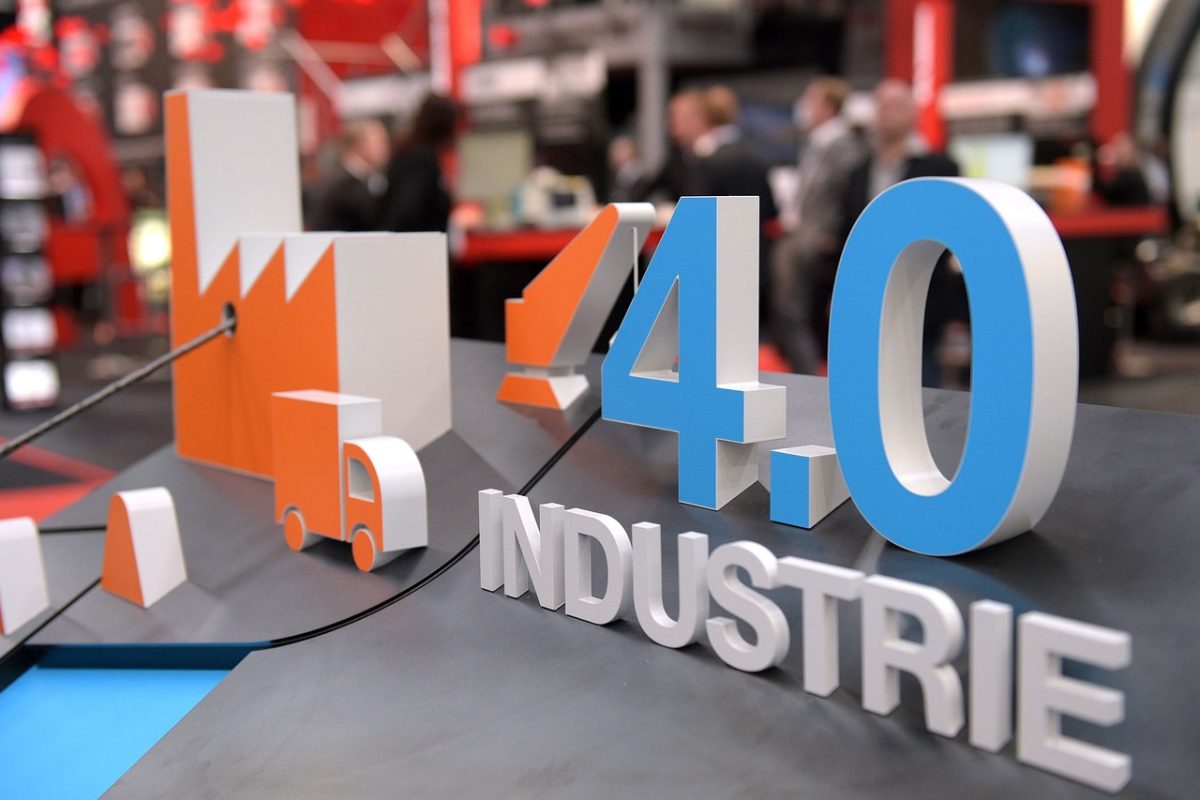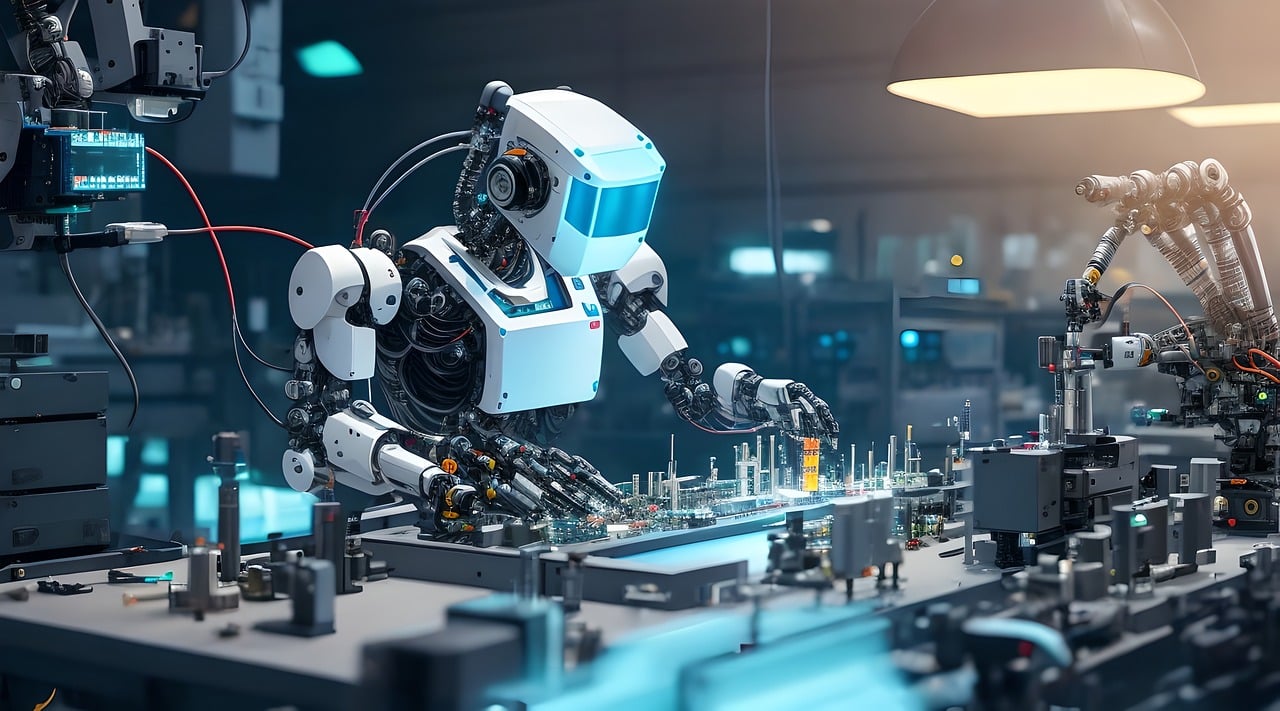
Latest NEWS
Unleashing the Future: Discovering the Top 5 Key Trends at SPS Nuremberg 2024

Industrial Automation and Robotics at SPS Nuremberg 2024
Unleashing the Future: Discovering the Top 5 Key Trends at SPS Nuremberg 2024
Industrial Automation and Robotics at SPS Nuremberg 2024

Firstly, artificial intelligence (AI) is set to revolutionize the industrial automation landscape. AI-powered robots and machines are becoming increasingly intelligent and capable of performing complex tasks with minimal human intervention. At SPS Nuremberg 2024, we can expect to witness the latest advancements in AI-driven automation systems that can adapt and learn from their environment, leading to increased efficiency and productivity in industrial processes.
Secondly, the Internet of Things (IoT) is playing a pivotal role in transforming industrial automation. The ability to connect and communicate with various devices and systems has opened up new possibilities for seamless integration and data exchange. At SPS Nuremberg 2024, attendees can expect to see a wide range of IoT-enabled automation solutions that enable real-time monitoring, predictive maintenance, and improved decision-making.
Another key trend that will be showcased at SPS Nuremberg 2024 is collaborative robotics. Traditionally, robots have been confined to cages, separated from human workers due to safety concerns. However, advancements in sensor technology and safety standards have paved the way for collaborative robots, also known as cobots. These robots can work alongside humans, enhancing productivity and flexibility in industrial settings. Visitors to the trade fair can expect to witness demonstrations of cobots performing intricate tasks while ensuring the safety of their human counterparts.
Furthermore, additive manufacturing, commonly known as 3D printing, is gaining significant traction in the industrial automation sector. This technology allows for the rapid prototyping and production of complex parts, reducing lead times and costs. At SPS Nuremberg 2024, attendees can explore the latest advancements in 3D printing for industrial applications, including the use of advanced materials and multi-material printing techniques.
Lastly, sustainability and energy efficiency are becoming increasingly important in the industrial automation and robotics industry. As companies strive to reduce their environmental footprint and comply with stricter regulations, there is a growing demand for energy-efficient automation solutions. At SPS Nuremberg 2024, visitors can expect to discover innovative technologies that optimize energy consumption, reduce waste, and promote sustainable manufacturing practices.
In conclusion, SPS Nuremberg 2024 promises to be an exciting event for the industrial automation and robotics industry. The top five key trends that will be showcased at the trade fair include artificial intelligence, the Internet of Things, collaborative robotics, additive manufacturing, and sustainability. These trends are set to shape the future of industrial automation, revolutionizing processes, enhancing productivity, and promoting sustainable practices. As we eagerly anticipate SPS Nuremberg 2024, it is clear that the future of industrial automation and robotics is bright, and this trade fair will serve as a platform to unleash its full potential.
IoT (Internet of Things) in Manufacturing: Key Trends at SPS Nuremberg 2024
The SPS Nuremberg trade fair is a highly anticipated event in the manufacturing industry, where professionals gather to explore the latest trends and innovations. In 2024, one of the key areas of focus at SPS Nuremberg is the Internet of Things (IoT) in manufacturing. The IoT has been transforming various industries, and its impact on manufacturing is undeniable. This article will delve into the top 5 key trends in IoT at SPS Nuremberg 2024.
Firstly, one of the prominent trends in IoT is the integration of artificial intelligence (AI) and machine learning (ML) in manufacturing processes. AI and ML algorithms can analyze vast amounts of data collected from IoT devices, enabling manufacturers to make data-driven decisions and optimize their operations. This integration allows for predictive maintenance, where machines can detect potential failures and schedule maintenance before any breakdown occurs. This trend is set to revolutionize the manufacturing industry by reducing downtime and increasing productivity.
Secondly, edge computing is gaining traction in the IoT landscape. Edge computing refers to the processing and analysis of data at the edge of the network, closer to the source of data generation. This approach reduces latency and bandwidth requirements, making it ideal for real-time applications in manufacturing. By deploying edge computing devices, manufacturers can process data locally, enabling faster response times and reducing reliance on cloud-based solutions. This trend is particularly relevant for industries that require immediate decision-making, such as robotics and automation.
Another key trend in IoT at SPS Nuremberg 2024 is the increased adoption of digital twins. A digital twin is a virtual replica of a physical asset or system, created by collecting real-time data from sensors embedded in the physical counterpart. Digital twins enable manufacturers to simulate and analyze various scenarios, optimizing performance and predicting potential issues. By leveraging digital twins, manufacturers can improve product quality, reduce costs, and enhance overall efficiency. This trend showcases the potential of IoT in revolutionizing the manufacturing industry.
Furthermore, cybersecurity is a critical concern in the IoT landscape. As more devices become interconnected, the risk of cyber threats increases. Manufacturers must prioritize cybersecurity measures to protect their sensitive data and ensure the integrity of their operations. At SPS Nuremberg 2024, experts will discuss the latest advancements in IoT security, including encryption protocols, authentication mechanisms, and intrusion detection systems. This trend highlights the importance of a holistic approach to IoT implementation, considering both the benefits and risks associated with interconnected devices.
Lastly, interoperability and standardization are key trends in IoT at SPS Nuremberg 2024. With the proliferation of IoT devices from different manufacturers, ensuring seamless communication and compatibility between devices is crucial. Interoperability allows manufacturers to integrate various IoT devices and systems, creating a unified ecosystem that enhances efficiency and productivity. Standardization efforts aim to establish common protocols and frameworks, enabling interoperability across different devices and platforms. This trend emphasizes the need for collaboration and industry-wide cooperation to fully unlock the potential of IoT in manufacturing.
In conclusion, the IoT is set to revolutionize the manufacturing industry, and SPS Nuremberg 2024 provides a platform to explore the latest trends in this field. The integration of AI and ML, edge computing, digital twins, cybersecurity, and interoperability are the key trends to watch out for. These trends have the potential to transform manufacturing processes, optimize operations, and drive innovation. As the manufacturing industry embraces the IoT, it is essential for professionals to stay informed about these trends and adapt their strategies accordingly. SPS Nuremberg 2024 promises to be an exciting event, showcasing the future of IoT in manufacturing.
Cybersecurity for Industrial Control Systems: Insights from SPS Nuremberg 2024
Unleashing the Future: Discovering the Top 5 Key Trends at SPS Nuremberg 2024
Cybersecurity for Industrial Control Systems: Insights from SPS Nuremberg 2024
The SPS Nuremberg 2024 conference brought together industry leaders, experts, and enthusiasts to explore the latest trends and innovations in the field of industrial control systems. One of the most pressing topics discussed was cybersecurity, as the increasing connectivity of these systems poses significant risks. In this article, we will delve into the top five key trends in cybersecurity for industrial control systems that emerged from the conference.
First and foremost, the importance of proactive cybersecurity measures was emphasized throughout the event. Traditional reactive approaches are no longer sufficient in the face of sophisticated cyber threats. Industry professionals stressed the need for organizations to adopt a proactive mindset, implementing robust security measures that can detect and prevent attacks before they occur. This shift towards proactive cybersecurity is crucial in safeguarding critical infrastructure and ensuring the smooth operation of industrial control systems.
Another key trend highlighted at SPS Nuremberg 2024 was the growing significance of artificial intelligence (AI) in cybersecurity. AI-powered solutions have the potential to revolutionize the way industrial control systems are protected. By leveraging machine learning algorithms, these systems can continuously analyze vast amounts of data, identify patterns, and detect anomalies in real-time. This proactive approach enables organizations to respond swiftly to potential threats, minimizing the risk of cyber-attacks and their potential impact.
Furthermore, the conference shed light on the importance of collaboration and information sharing in the realm of cybersecurity. With cyber threats becoming increasingly sophisticated and pervasive, it is crucial for organizations to work together to combat these challenges. The sharing of threat intelligence, best practices, and lessons learned can significantly enhance the collective defense against cyber-attacks. SPS Nuremberg 2024 emphasized the need for industry-wide collaboration, encouraging stakeholders to establish partnerships and share knowledge to strengthen the overall cybersecurity posture.
In addition to collaboration, the conference also highlighted the significance of employee training and awareness in cybersecurity. Human error remains one of the leading causes of cyber incidents, making it imperative for organizations to invest in comprehensive training programs. SPS Nuremberg 2024 showcased various training methodologies and tools designed to educate employees about potential threats, safe practices, and incident response protocols. By empowering employees with the knowledge and skills to identify and mitigate cyber risks, organizations can significantly reduce their vulnerability to attacks.
Lastly, the conference explored the emerging field of blockchain technology in industrial control system cybersecurity. Blockchain, known for its decentralized and immutable nature, offers promising solutions for securing critical infrastructure. By leveraging blockchain, organizations can enhance the integrity and transparency of their control systems, making it more difficult for malicious actors to compromise them. SPS Nuremberg 2024 showcased several innovative use cases of blockchain in industrial control system cybersecurity, highlighting its potential to revolutionize the field.
In conclusion, SPS Nuremberg 2024 provided valuable insights into the top five key trends in cybersecurity for industrial control systems. The conference emphasized the importance of proactive measures, the role of artificial intelligence, the significance of collaboration and information sharing, the need for employee training and awareness, and the potential of blockchain technology. As the world becomes increasingly interconnected, it is crucial for organizations to stay ahead of cyber threats and adopt robust cybersecurity strategies to protect their critical infrastructure. By embracing these trends, organizations can unleash the future and ensure the secure and efficient operation of industrial control systems.
Exploring Digital Twin and Simulation Technologies at SPS Nuremberg 2024
Unleashing the Future: Discovering the Top 5 Key Trends at SPS Nuremberg 2024
Exploring Digital Twin and Simulation Technologies at SPS Nuremberg 2024
The SPS Nuremberg trade fair is renowned for showcasing the latest advancements in automation and digitalization. As we delve into the future, one of the key trends that has emerged at SPS Nuremberg 2024 is the growing prominence of digital twin and simulation technologies. These technologies are revolutionizing industries by providing virtual replicas of physical systems, enabling businesses to optimize their operations and make informed decisions.
Digital twin technology involves creating a virtual representation of a physical asset, such as a machine or a production line. This virtual replica is equipped with sensors that collect real-time data, allowing businesses to monitor and analyze the performance of their assets. By simulating various scenarios, companies can identify potential issues and optimize their processes, leading to increased efficiency and reduced downtime.
Simulation technologies, on the other hand, enable businesses to create virtual environments that mimic real-world conditions. These simulations can be used to test and validate new products or processes before they are implemented in the physical world. By identifying and rectifying any flaws or inefficiencies in the virtual environment, companies can save time and resources, ultimately improving their overall productivity.
One of the key advantages of digital twin and simulation technologies is their ability to facilitate predictive maintenance. By continuously monitoring the performance of assets through digital twins, businesses can detect anomalies and predict potential failures before they occur. This proactive approach to maintenance not only minimizes downtime but also extends the lifespan of assets, resulting in significant cost savings.
Furthermore, digital twin and simulation technologies are playing a crucial role in the development of autonomous systems. By creating virtual replicas of autonomous vehicles or robots, companies can test and refine their algorithms in a safe and controlled environment. This enables them to ensure the reliability and safety of these systems before they are deployed in real-world scenarios, paving the way for the widespread adoption of autonomous technologies.
In addition to their impact on individual businesses, digital twin and simulation technologies are also driving collaboration and innovation across industries. By sharing digital twin models and simulation data, companies can collaborate with partners and suppliers to optimize their supply chains and streamline their operations. This collaborative approach fosters innovation and accelerates the development of new products and services, ultimately benefiting the entire industry.
As we explore the digital twin and simulation technologies showcased at SPS Nuremberg 2024, it becomes evident that these advancements are transforming industries and unlocking new possibilities. From predictive maintenance to autonomous systems and collaborative innovation, businesses are harnessing the power of virtual replicas and simulations to optimize their operations and drive growth.
In conclusion, the SPS Nuremberg trade fair has unveiled the top 5 key trends of 2024, with digital twin and simulation technologies taking center stage. These technologies are revolutionizing industries by providing virtual replicas and simulations that enable businesses to optimize their operations, improve productivity, and drive innovation. As we embrace the future, it is clear that digital twin and simulation technologies will continue to shape the way we work and pave the way for a more efficient and connected world.
Industrial AI (Artificial Intelligence) and Machine Learning: Highlights from SPS Nuremberg 2024
Unleashing the Future: Discovering the Top 5 Key Trends at SPS Nuremberg 2024
Industrial AI (Artificial Intelligence) and Machine Learning: Highlights from SPS Nuremberg 2024
The SPS Nuremberg 2024 trade fair showcased the latest advancements in industrial automation and technology. Among the many exciting developments, the field of Industrial AI (Artificial Intelligence) and Machine Learning stood out as a key trend that is set to revolutionize the manufacturing industry. In this article, we will explore the top 5 highlights from SPS Nuremberg 2024 in the realm of Industrial AI and Machine Learning.
1. Enhanced Predictive Maintenance:
One of the most significant applications of Industrial AI and Machine Learning is in the area of predictive maintenance. Traditionally, maintenance activities were scheduled based on fixed intervals or reactive responses to equipment failures. However, with the advent of AI and Machine Learning, manufacturers can now leverage data from sensors and other sources to predict when a machine is likely to fail. This proactive approach allows for timely maintenance, reducing downtime and optimizing productivity.
2. Intelligent Quality Control:
Quality control is a critical aspect of manufacturing, and AI and Machine Learning are transforming this process. By analyzing vast amounts of data, these technologies can identify patterns and anomalies that may indicate a defect or a potential issue in the production line. This enables manufacturers to take corrective actions in real-time, ensuring that only high-quality products reach the market.
3. Autonomous Robots:
Robots have long been a part of the manufacturing industry, but with the integration of AI and Machine Learning, they are becoming more intelligent and autonomous. At SPS Nuremberg 2024, several exhibitors showcased robots that can learn from their environment and adapt to changing conditions. These autonomous robots can perform complex tasks with precision and efficiency, freeing up human workers for more strategic and creative roles.
4. Smart Supply Chain Management:
AI and Machine Learning are revolutionizing supply chain management by optimizing processes and improving efficiency. By analyzing data from various sources, including sales forecasts, inventory levels, and transportation routes, these technologies can make accurate predictions and recommendations. This enables manufacturers to streamline their supply chain, reduce costs, and improve customer satisfaction.
5. Human-Machine Collaboration:
Contrary to popular belief, AI and Machine Learning are not replacing human workers; instead, they are enhancing their capabilities. At SPS Nuremberg 2024, there were numerous demonstrations of how humans and machines can collaborate seamlessly. For example, cobots (collaborative robots) can work alongside humans, assisting them in physically demanding or repetitive tasks. This collaboration between humans and machines not only increases productivity but also creates a safer and more ergonomic work environment.
In conclusion, the SPS Nuremberg 2024 trade fair showcased the immense potential of Industrial AI and Machine Learning in revolutionizing the manufacturing industry. From enhanced predictive maintenance to intelligent quality control, autonomous robots, smart supply chain management, and human-machine collaboration, these technologies are set to transform the way we produce goods. As we embrace these advancements, it is crucial to ensure that ethical considerations and human-centric approaches are at the forefront. With the right balance between technology and human expertise, we can unleash the full potential of Industrial AI and Machine Learning, creating a brighter future for the manufacturing industry.








